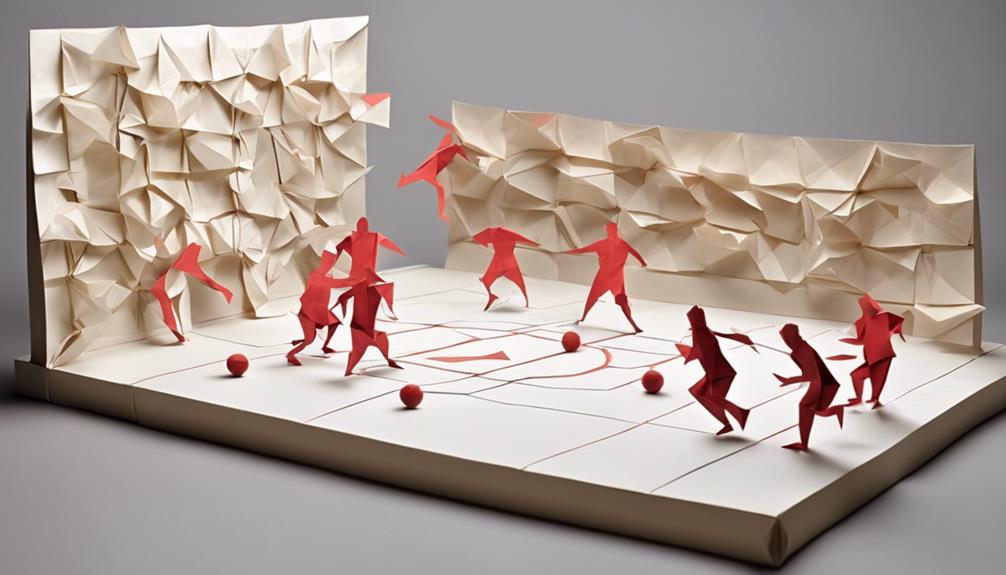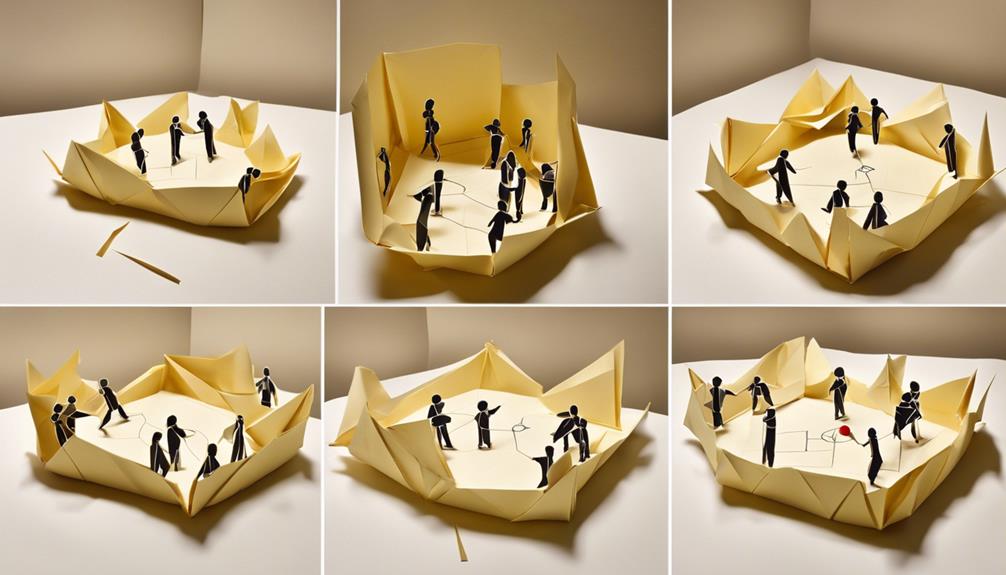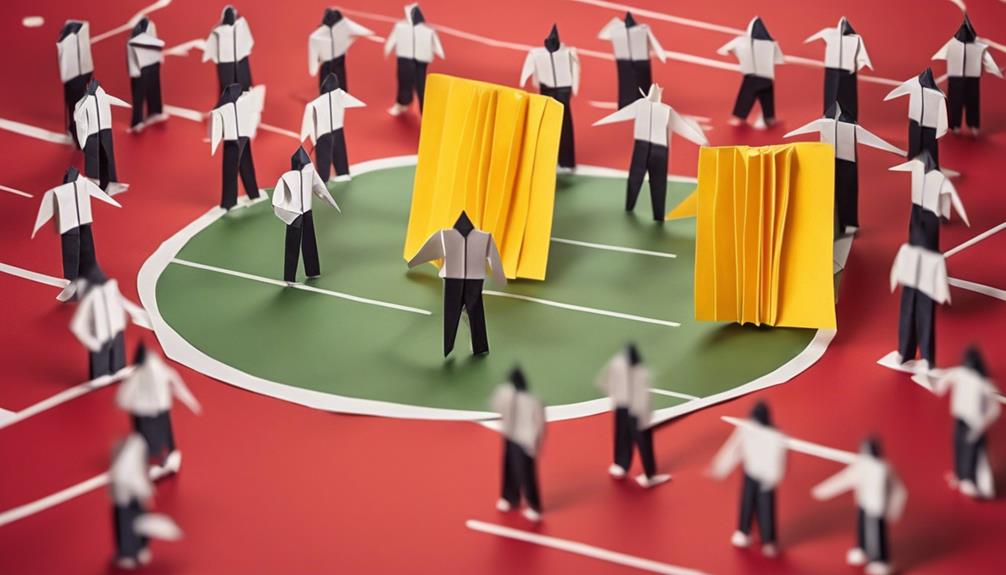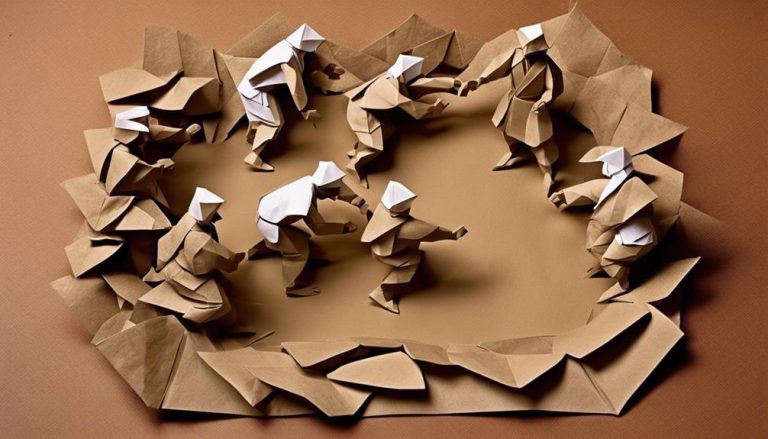General Rules of Field Handball
You're about to embark on the fast-paced world of field handball, where strategy, skill, and teamwork collide in a high-intensity game of speed, strength, and agility. Your goal is to score more goals than the opposing team by propelling the ball into their goal. Each player has a unique role, with the goalkeeper defending the goal area. The game is divided into two 30-minute halves, with a 10-minute halftime break to reassess strategy. Fouls can lead to penalty throws, and mastering ball possession and control is key to dictating the game's flow. As you navigate the rules and strategies, you'll uncover the intricacies of this dynamic sport.
Game Objective and Winning Conditions

Your primary objective in field handball is to score more goals than the opposing team by propelling the ball into their goal, with the team accumulating the most goals at the end of the 60-minute game declared the winner. To achieve this, you'll need to develop a solid game strategy that focuses on effective ball control, precise passing, and clever positioning. Your team's victory conditions are met when you've scored more goals than the opposing team, and the game clock expires.
A well-executed game strategy involves identifying weaknesses in the opponent's defense and capitalizing on them. This might involve quick breaks, clever feints, or pinpoint accurate shots on goal. As you navigate the game, remaining flexible and adjusting your strategy as needed is crucial. Remember, the team that adapts quickest to the game's unfolding dynamics often gains a decisive advantage.
Player Roles and Positions
As you take to the field, you'll quickly realize that each player has a unique role to play in achieving victory. You'll need to understand the goalkeeper's key responsibilities, such as defending the goal and distributing the ball to teammates, as well as the strategic positioning of players on the court. By grasping these essential elements, you'll be better equipped to develop effective court coverage assignments and execute your team's game plan.
Goalkeeper's Key Responsibilities
As a goalkeeper in field handball, you're the last line of defense between the opposing team and your goal. Positioned between the goalposts, a goalkeeper's primary objective is to prevent the opposing team from scoring by defending the goal area with their body, using a combination of agility, quick reflexes, and strategic positioning. Your Goalkeeper Mindset is vital in staying focused and alert throughout the game. You must develop a Defensive Strategy that allows you to anticipate and react to opponents' moves. This includes reading the game, identifying scoring opportunities, and making split-second decisions to block shots or intercept passes. Your ability to read the game and make smart decisions will make all the difference in keeping your team ahead. Remember, as a goalkeeper, you're not just a shot-blocker, but a game-changer.
Player Positioning Strategies
Effective player positioning is essential in field handball, and you'll need to master various strategies to outmaneuver your opponents and create scoring opportunities. As a player, you'll need to understand your role and position on the court, as well as those of your teammates. This starts with assigning players to specific positions, such as left and right wings, centers, and goalkeepers. Each position has unique responsibilities and requires specific skills. For instance, wing players are responsible for creating scoring opportunities through fast breaks and Wing Play, using their speed and agility to outmaneuver opponents. Meanwhile, centers focus on defending the goal and creating scoring opportunities through clever passes and movement. A Defensive Shift is vital in responding to opponents' attacks, where players must quickly adjust their positioning to block shots and intercept passes. By mastering these strategies, you'll be able to outmaneuver your opponents and create scoring opportunities that can turn the tide of the game.
Court Coverage Assignments
When you take to the court, you'll need to understand your role in the team's overall court coverage assignment, which involves strategic positioning to maximize defensive strength and create scoring opportunities. As a player, you'll be assigned a specific zone or area of the court to defend, and it's crucial to comprehend the responsibilities that come with your position.
Here are key aspects of court coverage assignments to keep in mind:
- Zone Defense: Understand your zone's boundaries and be prepared to defend against opponents entering your area.
- Wing Play: As a wing player, focus on defending the sideline and supporting your teammates in their zones.
- Communication: Constantly communicate with your teammates to ensure seamless transitions and effective defense.
- Adaptability: Be prepared to adjust your positioning based on the opponent's strategy and your team's needs.
Game Duration and Breaks

You're likely familiar with the standard 60-minute game duration in field handball, divided into two 30-minute halves with a 10-minute halftime break in between. This break is vital for teams to reassess and adjust their halftime strategy. During this time, coaches and players can discuss adjustments to their game plan, address weaknesses, and refocus their efforts to gain a competitive edge.
In addition to the halftime break, referees may also call timeouts to address injuries, disputes, or other incidents that require attention. These referee timeouts can profoundly impact the game's momentum and tempo, so it's essential for teams to be prepared to adapt quickly. You should be aware that referee timeouts can occur at any point during the game, and teams must be ready to respond accordingly. By understanding the game duration and breaks, you'll be better equipped to navigate the intricacies of field handball and make the most of your playing time.
Ball In and Out of Play
As you learn about the rules of field handball, you need to understand when the ball is in and out of play. You need to know that the ball is out of play when it crosses the sideline or goal line, or when the referee stops play. Now, let's explore the specific points that determine when the ball is in or out of play, starting with the ball crossing the line and the out of bounds area.
Ball Over the Line
In field handball, a ball is considered out of play if it completely crosses the sideline or goal line, or if the referee decides it's impossible to play the ball due to its position. As a player, you must understand when the ball is out of play, as this can have a profound impact on your team's defensive strategies. You must be aware of the ball's position at all times to avoid boundary disputes.
Some key points to keep in mind:
- If the ball crosses the sideline or goal line, it's out of play, and the opposing team is awarded a throw-in or corner throw.
- If the referee decides the ball is impossible to play, it's considered out of play, and a free throw is awarded to the opposing team.
- The referee's decision is final, so it's vital to respect their calls, even in the heat of the game.
- Remember, a ball that's only partially over the line is still in play, so be prepared to react quickly to capitalize on scoring opportunities.
Out of Bounds Area
Understanding when the ball is in or out of play is critical, and it's equally important to recognize the out of bounds area, where the ball is considered out of play if it crosses the sideline or goal line or is deemed impossible to play by the referee. As you navigate the field, you must be aware of the boundary lines, as even the slightest mistake can lead to a throw-in, corner throw, or goal throw for the opposing team. You should always maintain good sideline etiquette, respecting the referee's decisions and avoiding disputes over boundary calls. Remember, the referee's ruling is final, and arguing with their decision can lead to a yellow or even a red card. In cases of boundary disputes, the referee will consult with their assistant referees to make a fair judgment. By understanding the out of bounds area and adhering to good sideline etiquette, you can focus on your game, reducing the risk of unnecessary interruptions and conflicts.
Scoring Goals and Points

You'll earn points in field handball by scoring goals, with each goal worth one point. As a player, your primary objective is to score as many goals as possible to outscore your opponent. When you score a goal, you'll earn the right to celebrate, but remember to keep your goal celebration brief and respectful.
Here are some key things to keep in mind when it comes to scoring goals and points:
- A goal is scored when the entire ball crosses the goal line between the goal posts and under the crossbar.
- If the ball is thrown out of bounds over the goal line and was last touched by a defender, you'll be awarded a corner throw instead of a goal.
- If you commit a foul that prevents a clear scoring opportunity, the opposing team may be awarded a penalty throw, which can lead to a point deduction for your team.
- The team with the most points at the end of the two 30-minute halves wins the game.
Fouls and Penalty Throws
When you commit a foul, you'll be penalized, and the opposing team may be awarded a penalty throw, which can lead to a scoring opportunity for them. As a player, understanding the rules surrounding fouls and penalty throws is vital to avoid giving the opposing team an advantage. A foul advantage is when the opposing team gains possession of the ball and has a clear scoring opportunity due to your mistake. In this case, the referee may not call a foul, allowing play to continue.
However, if the referee does call a foul, the opposing team may be awarded a penalty throw. A penalty strategy involves the opposing team's coach deciding who will take the penalty throw and where they will aim to score. As a defender, your goal is to disrupt their strategy by applying pressure and forcing them to make a difficult shot. Remember, fouls can be costly, so playing smart and avoiding giving the opposing team opportunities to score is imperative.
Restarts and Game Interruptions

As the game unfolds, interruptions and restarts are an inevitable part of the handball landscape, and it's essential that you're familiar with the rules governing these stoppages to stay ahead of the competition.
When the game is interrupted, you need to know how to respond.
- Timeout strategies: Use timeouts wisely to regroup, reassess, and refocus your team. Consider calling a timeout to disrupt the opponent's momentum or to adjust your strategy.
- Referee decisions: Respect the referee's authority and decisions. Avoid arguing with officials, as this can lead to penalties and disciplinary action.
- Game interruptions: Familiarize yourself with the rules governing game interruptions, such as injuries, fouls, and substitutions. Know how to adapt to these interruptions and use them to your advantage.
- Restart procedures: Understand the procedures for restarting play, including throw-offs, free throws, and goalkeeper throws. Make certain you're prepared to capitalize on these opportunities.
Ball Possession and Control
Mastering ball possession and control is key to dictating the flow of the game, and it's imperative you're able to maintain possession under pressure, especially after regrouping during timeouts or restarts. As a player, you must develop effective ball handling skills to keep the ball in your team's possession. This involves using various ball handling techniques, such as dribbling, feinting, and shielding, to outmaneuver opponents and create scoring opportunities.
To gain an upper hand, you should focus on implementing possession tactics that exploit the weaknesses of your opponents. This could include using slow-paced possession to frustrate opponents, or quick, high-intensity passes to catch them off guard. By doing so, you can dictate the tempo of the game and create scoring opportunities.
Misconduct and Disciplinary Actions

During intense matches, you'll inevitably encounter situations where opponents or teammates commit fouls, and understanding the nuances of misconduct and disciplinary actions is vital to handling these pivotal moments effectively.
As a handball player, familiarizing yourself with the Code of Conduct is imperative, which outlines the expected behavior of players, coaches, and officials. Failure to comply with this code can result in disciplinary actions, including Yellow Cards, suspensions, or even expulsions.
Key points to remember:
- Yellow Cards: a warning given to a player who has committed a minor infringement, such as unsportsmanlike conduct or disrespect towards referees.
- Suspensions: a temporary ban from playing, usually due to severe misconduct or repeated Yellow Cards.
- Expulsions: a permanent ban from playing, resulting from serious offenses like violence or verbal abuse.
- Code of Conduct: a set of rules outlining expected behavior, including respect for opponents, referees, and the game itself.
Understanding these disciplinary actions will help you tackle the game with confidence and sportsmanship.
Frequently Asked Questions
Can Players Wear Jewelry or Accessories During a Game?
As you prepare for the game, you wonder if you can wear your favorite necklace with a religious symbol. Unfortunately, for safety reasons, you can't wear jewelry or accessories, including those with personal expression or religious significance, during the game.
Are There Any Restrictions on Goalkeeper's Clothing?
As you step into the goalkeeper's shoes, remember that your attire is under scrutiny – goalkeepers, you're allowed to wear long-sleeved shirts and pants, but beware, glove restrictions apply, ensuring a fair game for all.
Can Players Take a Break During the Game for Medical Reasons?
If you need to take a break during the game for medical reasons, you can request an injury timeout; however, you'll require a medical exemption, ensuring your safety and well-being are prioritized.
Are There Specific Rules for Player Substitutions During the Game?
As you plunge into the game, you'll need to master timeout strategy and substitution tactics. You're allowed to make substitutions during timeouts or between plays, but be strategic, as each team is limited to three timeouts per half.
Can Coaches or Assistants Enter the Court During the Game?
"As you navigate the game, note that coaches or assistants cannot casually stroll onto the court during play, upholding strict court access and bench etiquette, ensuring a respectful, focused environment for players to thrive."






